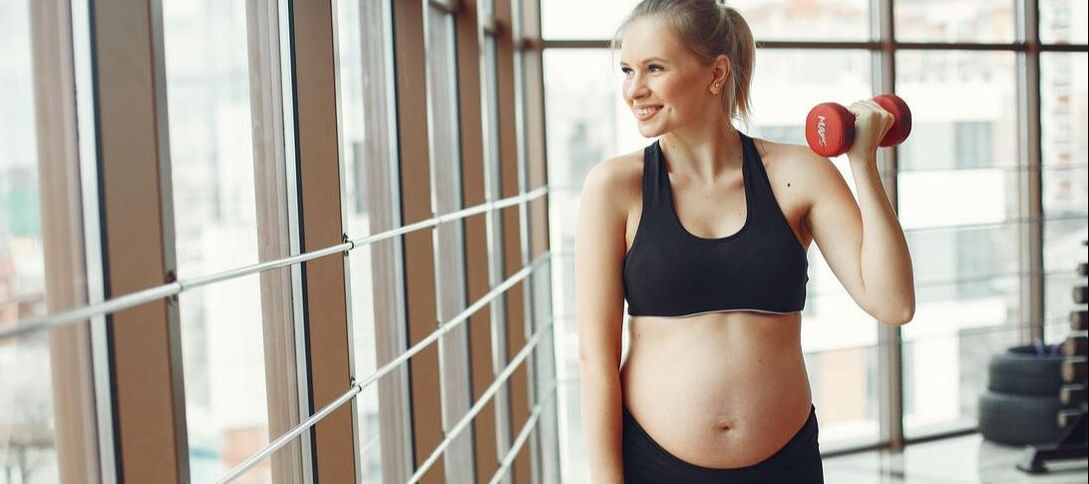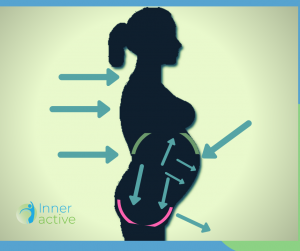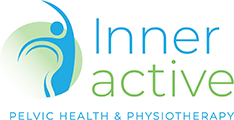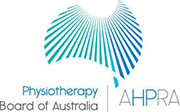
Pregnancy is known as an exciting time for the expectant family especially the mom! It is a time of growth and development with significant changes happening both visibly and invisibly in her body. Some of the changes are obvious, whilst others, not-so-obvious. The not-so-obvious changes are usually the physiological ones that are designed to provide the right environment for the baby’s development. Whereas, the obvious changes are seen as each week and month passes on, such as posture changes, increase in weight, breast size, and abdominal muscle stretch. The benefits of exercise during pregnancy are numerous as shared via this article by the American College of Obstetricians and Gynecologists.
So, what considerations are necessary when it comes to pregnancy and exercise? In this blog article we looking at linking in the above-mentioned changes in an effort to share helpful tips that can assist you in your choices of activities during this exciting period. It is important you follow the advice given by your healthcare provider- Disclaimer: The information in this article is for general knowledge only and it is important you seek medical advice specific to your situation.
We discuss the not-so-obvious changes.
- Cardiac: In order to meet the increasing demand for the blood supply, your heart would tend to enlarge and pump faster. That means, when doing a cardio workout, it is important you moderate the intensity of your exertion to moderate.
- Tip: A nice way to gauge this is to consider the talk test during the exercise – are you able to talk in full sentences whilst doing the exercise
- Circulation changes. The volume of the blood in your body increases as your baby needs to grow. Quite common changes that can occur are swelling in and around the lower legs, or what is also known as varicose veins that appear.
- Tip: From 20 weeks of pregnancy avoid lying on your back to do exercises as what can happen is that the weight of the baby can press on the major vessels returning blood to the heart.
- Tip: Schedule rest times with your limbs and joints against gravity to assist if you spend a significant amount of time standing or walking. The use of suitable support wear can also be an option.
- Core body temperature changes. You might find your body’s temperature will slightly become higher when you’re pregnant. Again, this provides the best environment for the baby’s growth. Keeping an eye on intensive exercises can also increase your core body temperature.
- Tip: Limit the intensity of your exercise as mentioned before, drink water before, during, and after an exercise; wear light clothing where possible and exercise in a cool ventilated space.
- Joint changes. Pregnancy hormones such as relaxin are known to change the structure of the ligaments that support your joint; therefore, becoming a bit softer. This tends to be affected more around the joints, in and around the pelvic and lower back to assist the pregnancy and also to prepare the body for labour.
- Tip: Some helpful ways to protect your joints:
- Don’t take part in high-impact exercises such as aerobics or running
- .Changing the environment that you’re exercising in such as consideration of exercising in the water (consideration with the water temperature is important).
- Tip: Some helpful ways to protect your joints:
The obvious changes :

- Pelvic floor muscles: The pelvic floor muscles are known to form the base of your pelvic and support. Due to the growing weight of the baby, there is a direct load over the pelvic floor muscles that can impact their function
- Tip: Learn to do pelvic floor muscle training exercises also known as Kegels to maintain strength in relation to the growing baby
- It is important these exercises are performed correctly and if you are not sure how to do it contact us and one of our women’s health physiotherapists can help you with making sure you are doing these exercises correctly and specifically to your own circumstances (it can be an issue of having muscles lacking coordination or flexibility)
- Abdominal muscles. Naturally, these muscles will continue to stretch and make room as your pregnancy progresses.
- Tip: Consider seeing a women’s health physiotherapist who can provide further advice and support on strategies with lifestyle habits, exercises, and prescription of suitable support wear you can consider.
- Posture: With the growth of your baby you may notice an increase in the curve of your lower back – known as a lumbar lordosis to assist with this. This is associated with an anterior tilt of your pelvic bone which when combined with the other changes in addition to lifestyle factors can result in the development of pain such as pelvic girdle pain
- Tip: Change positions often and frequently, consider the type of footwear you are wearing – supportive and comfortable
- Address any aches and pain early on- a physio can certainly help you with these
- If you require any further assistance in helping you to exercise during your pregnancy or are keen to start exercising, a woman’s health physio can help. Contact HERE
- Weight gain: It is the natural development of the growing fetus to be accompanied by additional weight during this time. It is important to understand your own weight gain during your pregnancy
- Tip Discuss with your healthcare provider your concerns regarding this
- TIp: Engage in regular exercises routine of low impact activities that your physiotherapist can help guide you on, or consider doing an exercise therapy program at our Unill clinic- these are supervised classes with a fully qualified women’s health physiotherapist
- Tip: Seek nutritional support with our accredited dietician
Resources
Pregnancy and exercise
Written by
Tafy Seade
Principal Physiotherapist
DISCLAIMER: This is general information only. For specific advice about your healthcare needs, you should seek advice from your health professional. Inner Active Pelvic Health and Physiotherapy does not accept any responsibility for loss or damage arising from your reliance on this fact sheet instead of seeing a health professional.





